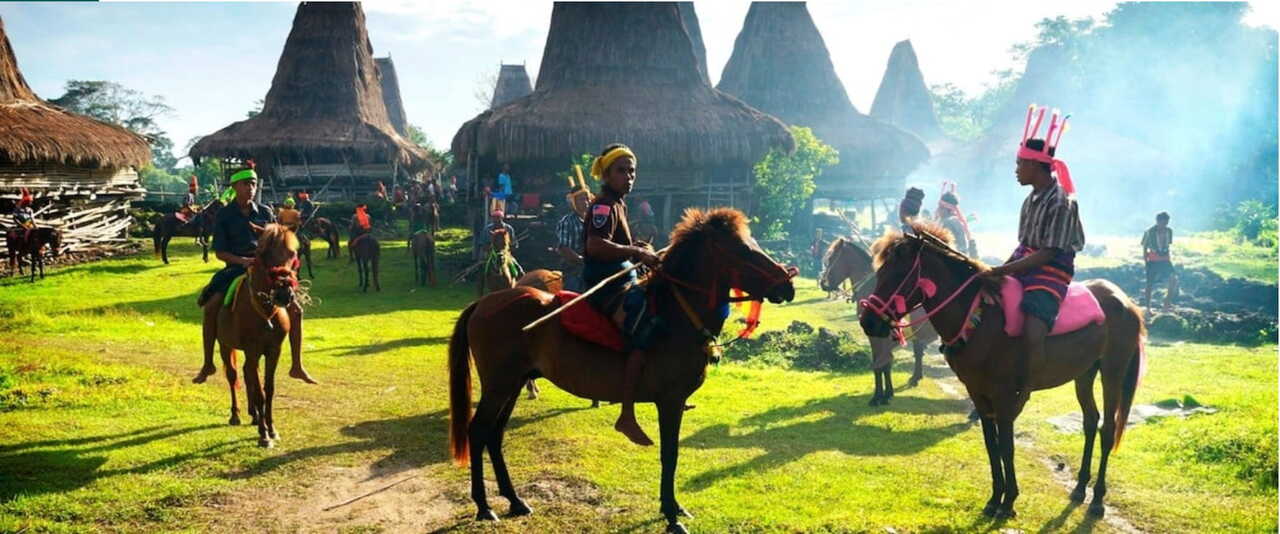Discover the Sumba Ikat
October 30, 2020
The traditional hand-woven fabric Tenun Ikat is one of Sumba’s most distinctive masterpieces – and an amazing example of nature’s role within Sumbanese cultural life.
Created from nature
Meaning to tie or bind, “Ikat” is created by resist dying cotton yarns prior to lining them onto a loom and weaving them into a desired design of complex motifs and patterns. It is an incredibly long and complicated process, taking two to three months to complete – or even up to a year for particularly large pieces – and requiring the dedication of anywhere from three to ten craftsmen.
During the process, each piece of Ikat undergoes 42 stages of work, from sourcing the raw materials and separating seeds from cotton (lamihi), to spinning, colouring, and weaving the yarns, designing the patterns and motifs, and finally, the finishing process (wari rumata).



The ikat, an expression of sumba’s flora and fauna
Each piece of Sumbanese Ikat is an expression of Sumba’s nature. The fabric itself is made entirely from plants: the cotton is found locally in nature, and the exceptional colours are created from leaves and roots, like indigo plants and noni roots.
But also, symbolic meaning is woven into each piece of Ikat with every motif and pattern – for example, the shrimp symbolises eternal life, the human-headed lion symbolises power, floral motifs symbolise social life, and the snake symbolises life after death. And while each region, and even, some families, have their own symbology, motifs inspired by flora and fauna, and symmetrical patterns which represent the balance and harmony in human life, are typical of Sumbanese Ikat. The result is a cloth which carries a personal story that can be passed through the generations, with nature at its heart.

Woven into culture
The completed Ikat pieces then play an important role in Sumbanese cultural life. With their symbology, the cloths reflect social status – and even today, it is forbidden to copy motifs reserved for royalty. Those who produce these motifs now never draw a copy, but instead reproduce the motif from memory. Royal families happily show their rare and exceptional Ikat to guests, but they would never allow it to be photographed.
And no official ceremony can be conducted in Sumba without the protagonists clad in Ikat, as we were lucky enough to experience for ourselves when we were offered our own pieces of Ikat at the Cap Karoso construction inauguration ceremony – a moment which symbolised our acceptance in Sumba.
Experience sumba ikat
Continuing the story, Sumba’s Ikat has now become a rich source of inspiration for our designers at Cap Karoso. For example, our wooden carvings are modernised patterns featuring Ikat symbols like the rooster, horses, turtles, etc., with each representing one of our villas which in turn are named after the Ikat animal symbol.
And, in honour of Sumba’s Ikat mastery, Cap Karoso will have a craft studio in our farm where guests can learn about the Ikat tradition, and children (or adults) can experience colouring fabrics with natural dyes, surrounded by Sumbanese nature.

